NOTHING OF THE SORT: BARBARA LODEN’S WANDA (1970)
Cristina Álvarez López and Adrian Martin
 FORWARD
FORWARD
 DOWNLOAD
DOWNLOAD
 ABSTRACT / KEYWORDS / ARTICLE / FOOTNOTES / BIBLIOGRAPHY / ABOUT THE AUTHOR
ABSTRACT / KEYWORDS / ARTICLE / FOOTNOTES / BIBLIOGRAPHY / ABOUT THE AUTHOR
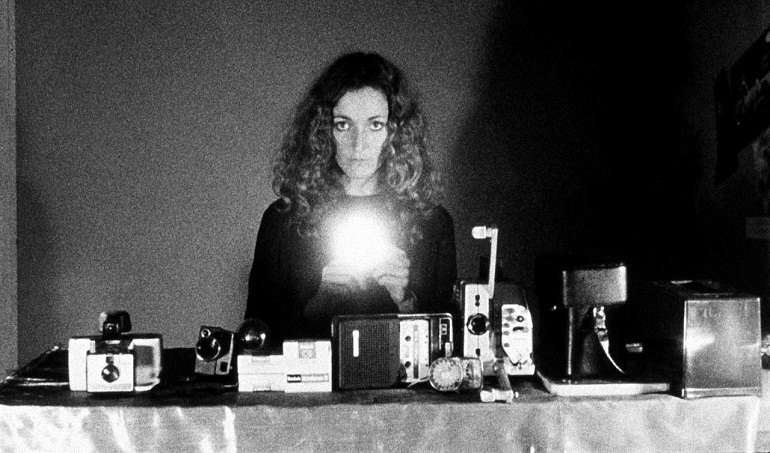
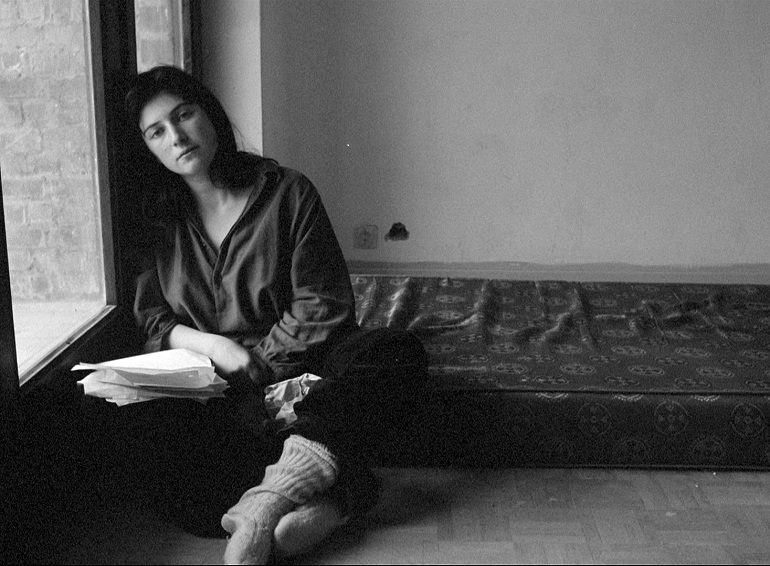
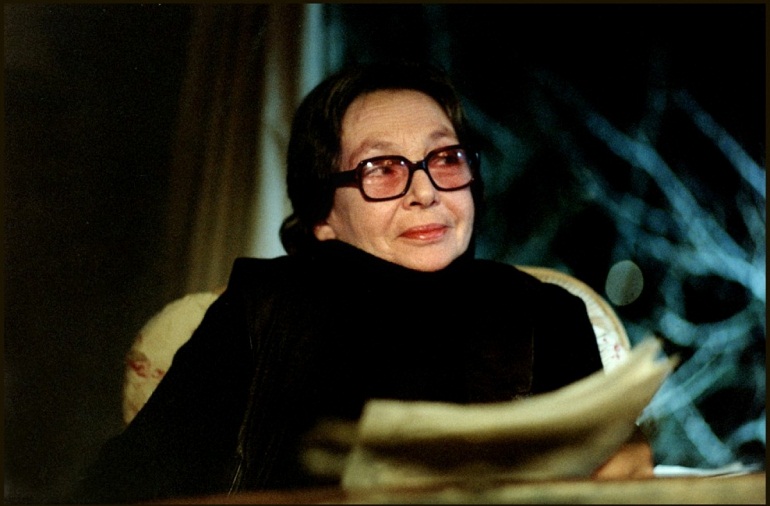
‘In the three films by women that have impressed me the most – Deux fois [1968], Je tu il elle [1974], Le camion [1977] – there is something extraordinary: the way the actress-auteurs are on both sides of the camera, without this having any consequences. There is a calm violence there which points up the difference with the male actor-auteur: look at Lewis or Chaplin, for them passing from one side of the camera to another means risking travesty, feminisation, and playing with this risk. Nothing of the sort [rien de tel] with women’. (KROHN, 1977: 28-29; DANEY, 2001: 28).
When Serge Daney spoke these words to Bill Krohn in 1977, celebrating the work of three emerging filmmakers of that decade (Jackie Raynal, Chantal Akerman and Marguerite Duras), he was no doubt unaware of Barbara Loden’s Wanda (1970), which he mentions in none of his writings. Three years later, however –in 1980, the same year that Loden died from cancer at the age of 48– Duras herself was certainly well acquainted with the film. In her dialogue with Loden’s husband Elia Kazan (which appears in the book Green Eyes, an expansion of a special Cahiers du cinéma issue that Daney helped organise, plus later contributions to the magazine), Duras makes a strong claim, somewhat in the same vein as Daney’s initial observation about the developing cinema of ‘actress-auteurs’:
‘I consider there to be a miracle in Wanda. Usually there is a distance between representation and text, between subject and action. Here, this distance is completely annulled. There is an immediate and definitive coincidence between Barbara Loden and Wanda. […] This miracle, for me, is not in the acting. It’s because she seems more truly herself in the film –I didn’t know her personally– than she could have been in life. She’s more authentic in the film than in life. That’s completely miraculous’. (DURAS, 1990, translation altered)
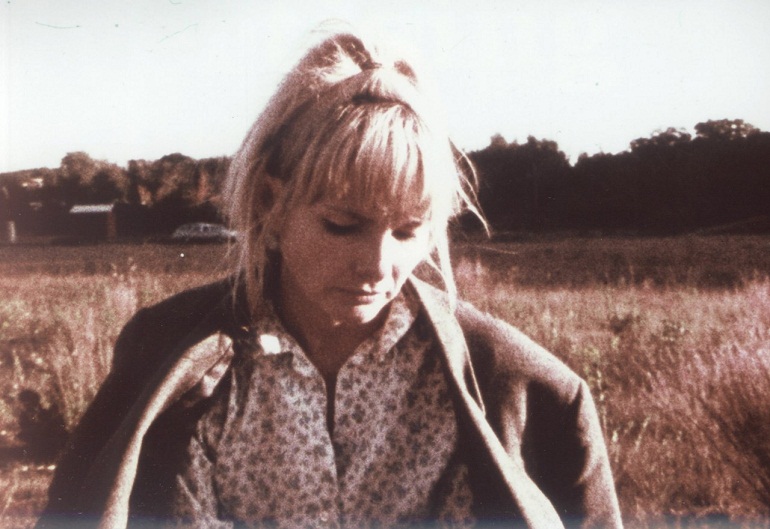
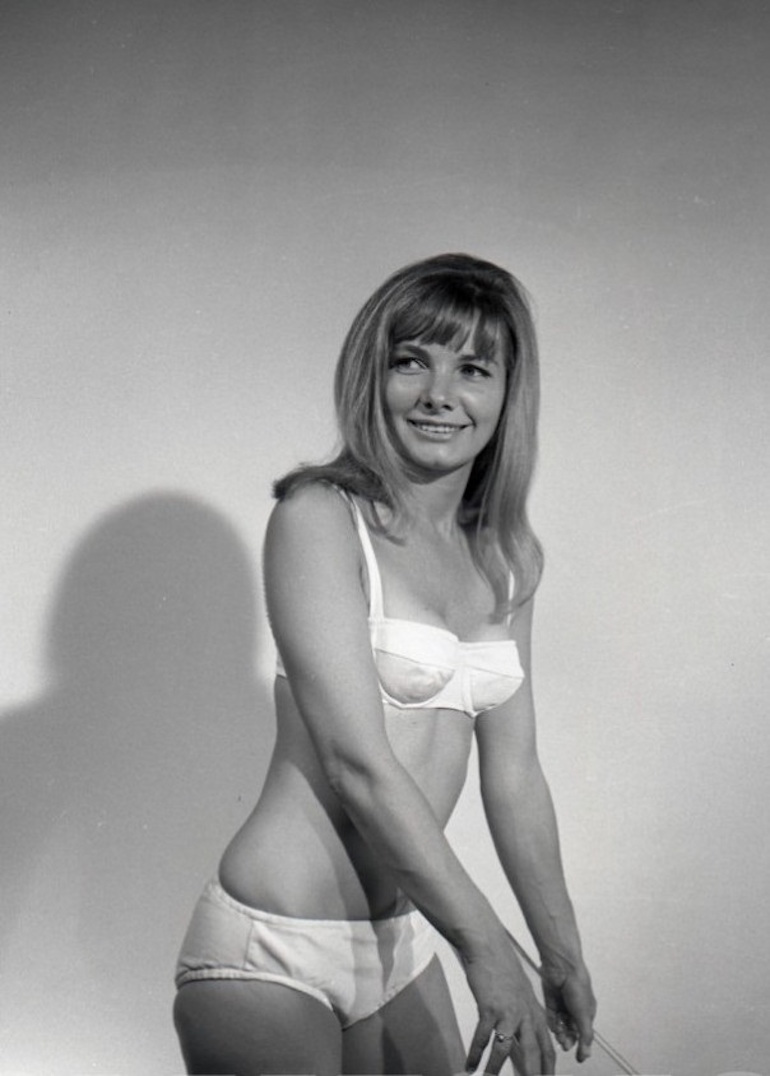
Barbara Loden has become a figure of myth. Her story calls out for a biopic: growing up in a small town, repressive environment; early work as a glamorous model (photos from this period proliferate on the Internet); marriage to Kazan and appearances in his great films Wild River (1960) and Splendor in the Grass (1961); the legend and continuing influence of her acting classes (see David Krasner’s popular 2011 manual An Actor’s Craft: The Art and Technique of Acting). And then the dark side, mined by Bérénice Reynaud in her game-changing essay (first written in 1995 ) ‘For Wanda’ (REYNAUD, 2004), and subsequently by various commentators, novelists and performers (see KARÁCSONYI, 2014): Loden the overlooked and the exploited; a screen for all manner of twisted male projections; a pawn in the psychodramatic games of the powerful men around her (on stage, cast in the Marilyn Monroe role in Arthur Miller’s After the Fall, directed by Kazan; interpreted, not entirely kindly, by Faye Dunaway in Kazan’s tortuous 1969 autobiographical film The Arrangement); unable to raise finance for any project that she developed in the decade after Wanda.
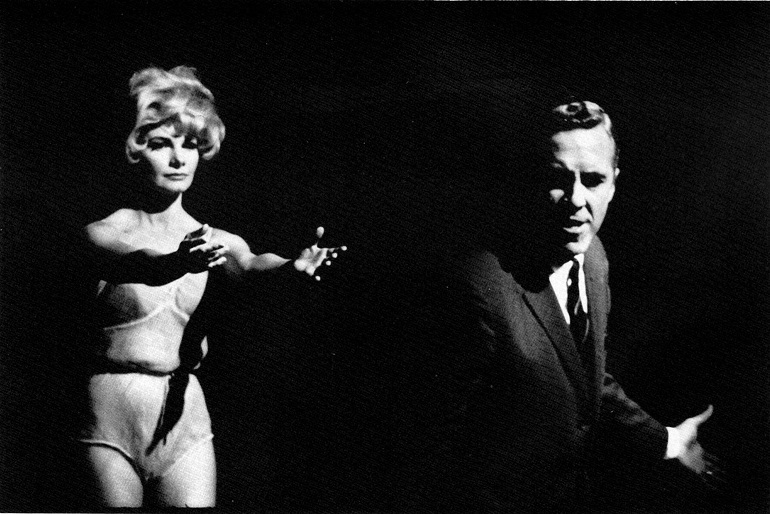
Unfortunately, the myth (as myths often do) has come to obscure the actual, material achievement of Wanda as a film. There is a tendency to simplify, and to do so along the lines of several, unwitting feminine stereotypes: Loden who is transparently ‘more herself’ in the film than in life, according to Duras –and therefore, implicitly, not involved in the production of art or artifice; or as a female director who passes from one side of the camera ‘calmly’, in Daney’s offhand formulation. Yet there is also (as Daney says, in his paradoxical fashion) a violence involved –and violence can well entail, in cinema, a splitting of self within representation, a complex and fractured mirroring of art and life, imagination and actuality. These are some of the aspects of Loden’s achievement as both director and actor in Wanda that we wish to explore here.
Our discussion of Loden and Wanda seeks to place it within a particular continuum of female actor-directors. Some precedents we will merely mention here: Ida Lupino, Agnès Varda, Mai Zetterling. Then, a particularly significant confluence that occurs in the early 1970s: not merely the avant-garde exemplars of Yoko Ono, Akerman, Duras and Raynal (see MARTIN, 2001), but also Anna Karina (Vivre ensemble, 1973), and Elaine May, both as leading player in A New Leaf (1971), and in the casting of her daughter, Jeannie Berlin, in The Heartbreak Kid (1972) –thus bringing in the crucial area of women’s self-depiction in screen comedy, a topic often overlooked in considerations of this field. In the present moment, a larger relevant grouping necessarily appears, including Lena Dunham, Diane Keaton, Miranda July, and Laura Dern as star and co-creator of the remarkable TV series Enlightened (2011-2013). And there are intriguing relays between these two key periods and their personnel, such as the oddball ‘psychic comedy’ In the Spirit (1990) by Sandra Seacat, another famous acting teacher, featuring May and Berlin, and co-written by the latter1. We will not discuss all these people and oeuvres in depth, but we shall sketch the map of a future, broader analysis.
II.
Loden described Wanda as being about a woman unable to adapt to her environment. She fits in nowhere, never understanding the rules of any place or situation. ‘Life is a mystery to her’, Loden said in a 1972 television interview (MK2, 2004). Wanda is frequently shown on the move, traversing large distances by bus or car. Yet, even when she is actually going somewhere – such as in early scenes where she is on her way to a family court hearing, although we are not immediately made aware of this fact – the film renders her voyaging as an irresolute drift, without clear destination or purpose. Like Gilles Deleuze in his Cinema 1 conjuring the modern ‘voyage/ballad’ film with all its errant disconnections (DELEUZE, 1986: 209), Loden renders Wanda’s trajectory as part of a narrative that is only loosely ever ‘stitched up’ or driven forward – even when it reaches the bank robbery scenes.
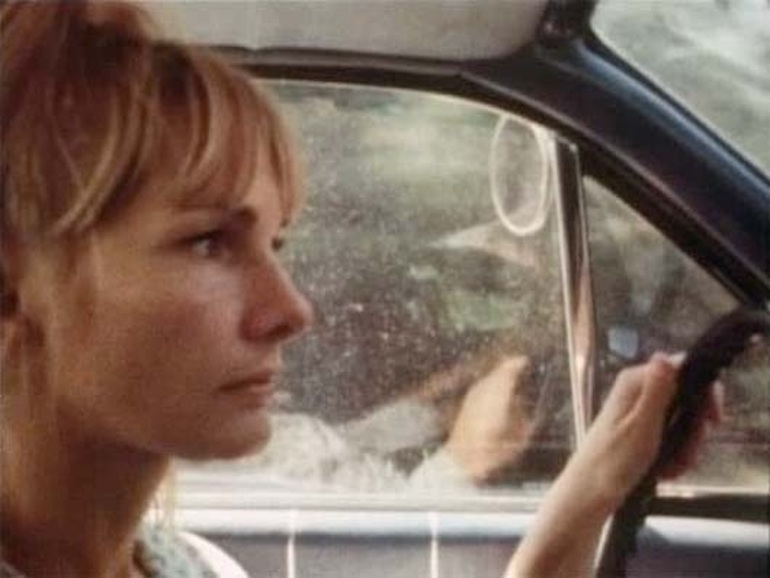
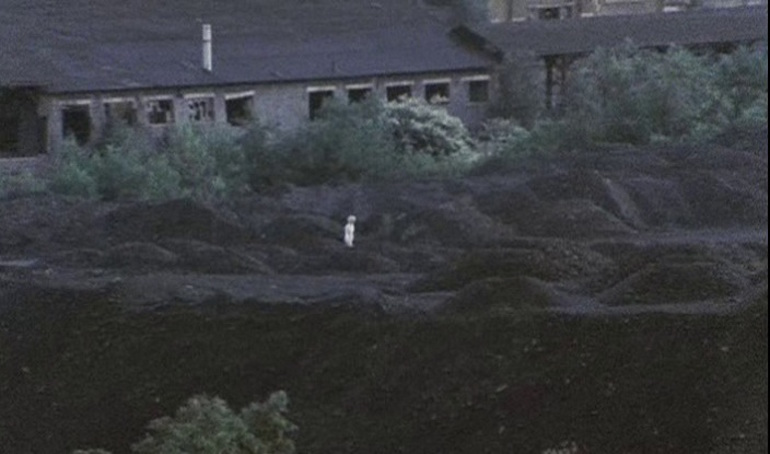
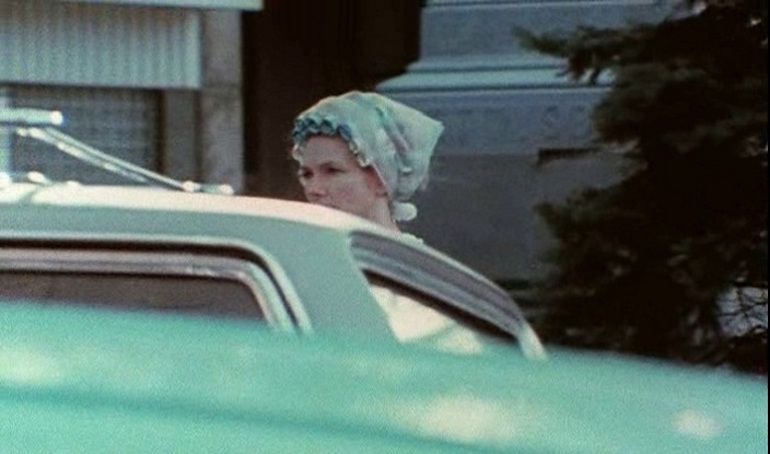
Wanda is an estranged body in motion, wandering through city streets. She crosses vast industrial landscapes and barren coal mining fields. There is never any home, family or community anywhere for her, never any sign of belonging. Pictorially, Wanda’s figure tends to be decentred in the film frame, jammed in or blocked from view by elements of her surroundings (such as traffic). She is frequently on the verge of slipping away at the margins of the screen; even Nicholas Proferes’ camerawork makes a show, at times, of struggling to keep her in view.
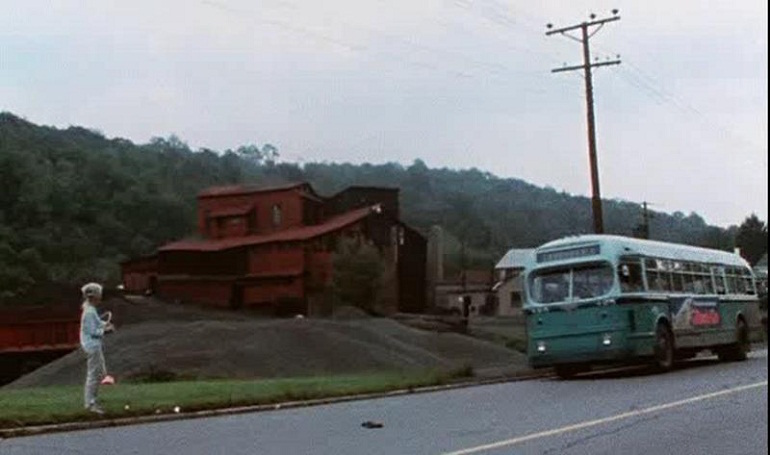
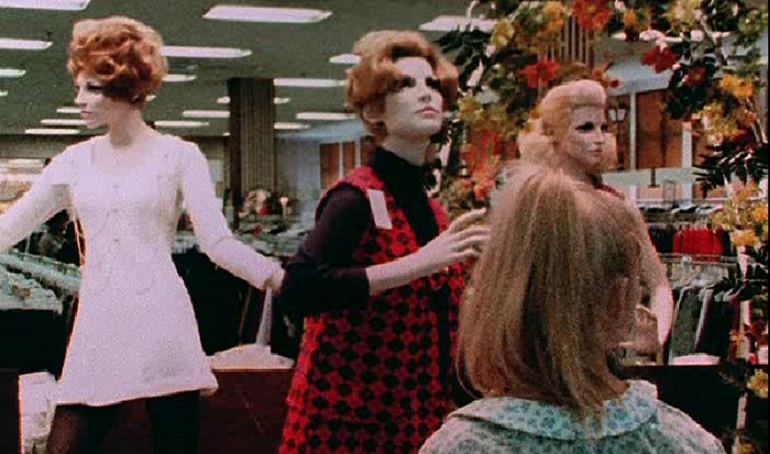
Loden makes an extremely precise portrait of a woman who neither has any space of her own, nor can make any space her own. As Reynaud notes, this is one of the closest affinities between Wanda and the films of Chantal Akerman, especially those in which the director herself appears as the central, performing figure: Saute ma ville (1968), Je tu il elle, L’homme à la valise (1983). When Wanda fills just a tiny part of any room that she is in, curled up in a foetal position; when she recedes into a corner or against a wall; when she puts herself on the extreme edge of a bed – it is as if she wanted to occupy the least amount of space possible.
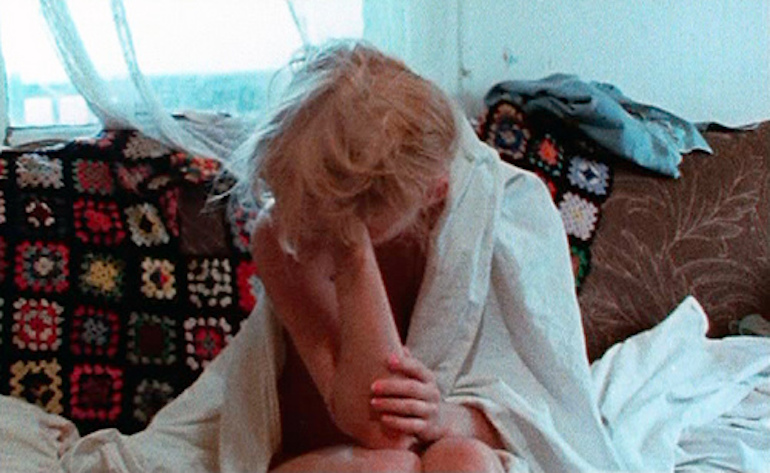
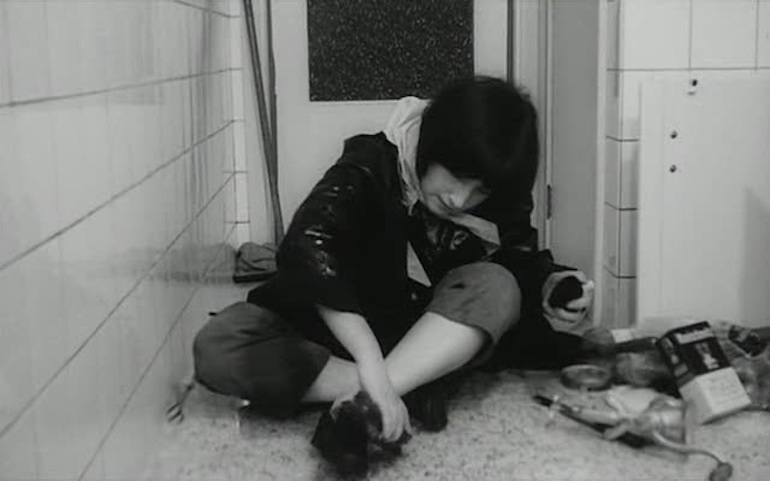
Wanda often hides in plain sight: surrounded by others, denied any privacy or intimacy. And yet, at the same time, she is usually overlooked, avoided, unacknowledged. Wanda is an invisible woman. All this is expressed in how Loden introduces Wanda into the film during its opening minutes, where a sudden pan reveals her to be sleeping on her sister’s family couch. Nothing indicates, until this instant, that she is even present in the scene we are witnessing. Her figural position here as a literal misfit, even (as the plot will later literally make her) an outlaw, is ironically echoed in a rhyming pan shot that is also a sudden ‘reveal’: the movement to the bar owner tied up behind the counter, in the scene that introduces Mr Dennis (Michael Higgins) and inaugurates his strange relationship with Wanda. Both of these displaced bodies are passive, locked in –and both, in their different ways, are victims. This link made between Wanda and the hapless bar owner is not gratuitous: like him, she is hidden, supressed, made invisible, cornered into a space that does not belong to her, and over which she has no control.
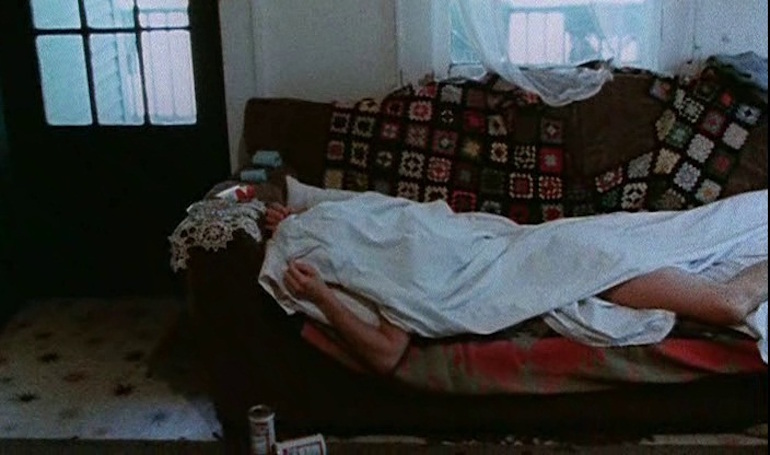
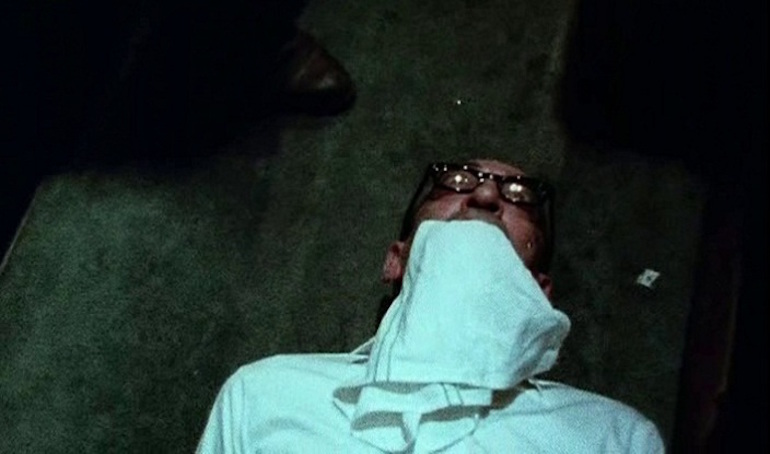
The path through which Loden arrived at this character and her story is intriguing and suggestive. The film was inspired by a news item that Loden had read in 1960 concerning a woman, Alma Malone, who took part in a robbery and then, on trial, thanked the judge who sentenced her to prison (see RÉMOND, 2013). Loden was struck by this paradox: a woman thanking a man in a position of authority for preventing or denying her freedom, her autonomy. Perhaps what Loden sensed in this tale was not so much the notion that this woman was accepting and willing to take punishment for her mistakes or criminal record; rather, it was the idea that this punishment puts an end to a false idea of ‘freedom’ –an aspect of 1960s countercultural ideology which the film implicitly questions. Only certain people, after all, get to be free in the way that era promised in its most utopian dreams of escape and revolution.
Accordingly, Wanda’s privileged space in the world, and in the film, is the threshold. She always hangs back at these thresholds –office doorways, domestic windows, car doors, even just some piece of architectural junk sitting in a landscape– waiting for permission to enter, for instructions on what to do, where to move, and when to speak. Anyone who casually assumes that Wanda is a film without a precise or systematic mise en scène –it is often described as being staged and shot in the spirit and manner of ‘documentary reportage’!– needs to look at how rigorous and expressive this pattern becomes across the entire movie.
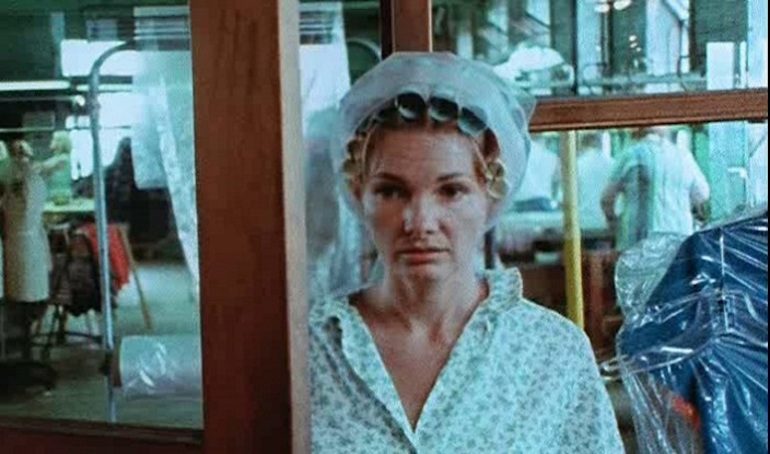
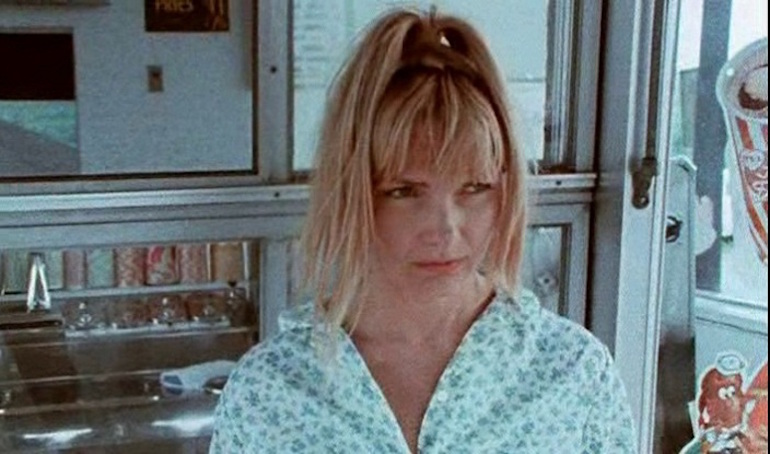
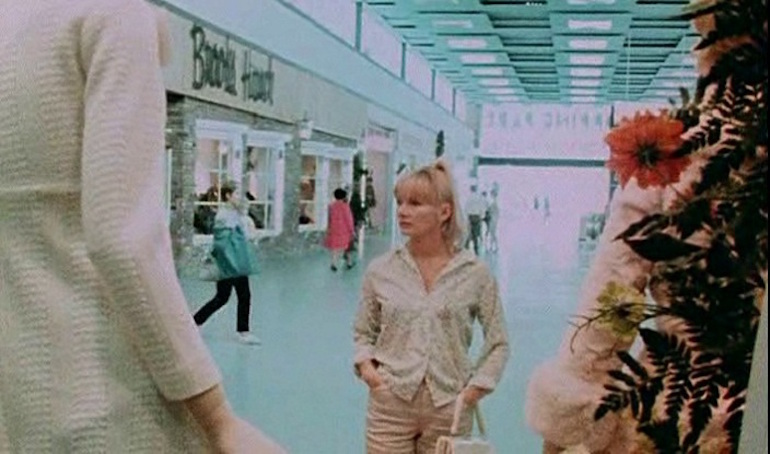
Like Wanda, Loden came from a poor family, and grew up in a community that offered no alternatives of a better, different, more ‘educated’ life. She somehow escaped from all that –‘to refuse to fit into it was a salvation for me’, she categorically states in the original audio recording of her 1970 interview with Michel Ciment (MK2, 2004)2– but Wanda does not, and cannot. The identification that Loden felt with Wanda is both direct and indirect, coming both from ‘inside’ and ‘outside’: she could have been Wanda, assumed her destiny, if she had stayed in that community. It was one possible self for Loden, hence a mirror or shadow double that could be extrapolated into a fiction.
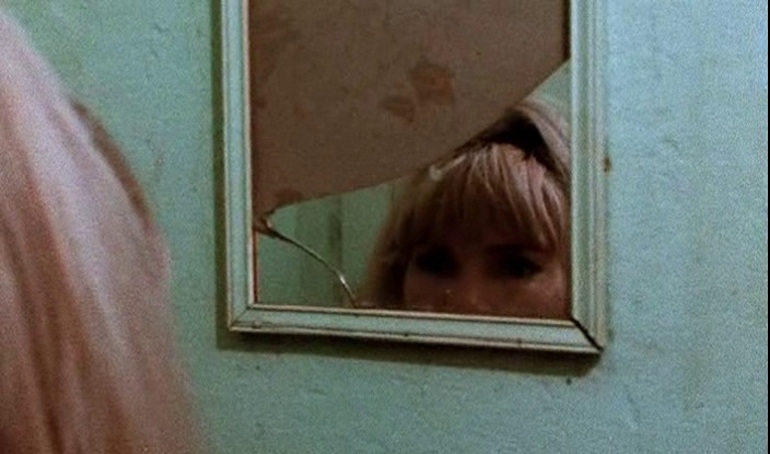
Wanda is thus an unusual and ambiguous heroine. In “For Wanda”, Bérénice Reynaud suggests that the historical erasure of the film, over many years, is closely related to its sensibility and subject. She writes: ‘Loden wanted to suggest, from the vantage point of her own experience, what it meant to be a damaged, alienated woman –not to fashion a “new woman” or a “positive heroine”’ (REYNAUD, 2004: 231). Wanda instinctively rejects dominant values of family and society –she leaves them behind, goes elsewhere– but she does so without any real consciousness of her action or its meaning. ‘It’s a matter of ignorance’, Loden stated to Ciment (MK2, 2004).
Wanda –an effectively homeless ‘floater’ as Loden described her, referring to a pervasive social type in modernity, which is also the subject of Varda’s Sans toit ni loi/Vagabond (1985)– is not an anarchist or a revolutionary. Her rejection of the world entails no possible alternative to it. The film poignantly conveys Wanda’s helplessness, her passivity, her lack of initiative; her dependence upon men, and her need to be validated by them. Loden declared that she was able to relate to the character’s passivity because: ‘I was a victim. I’ve been in analysis and I was told that, in my life, I’ve played the role of the victim and the orphan. So it was a matter of personal observation’ (CIMENT, 1975: 36).
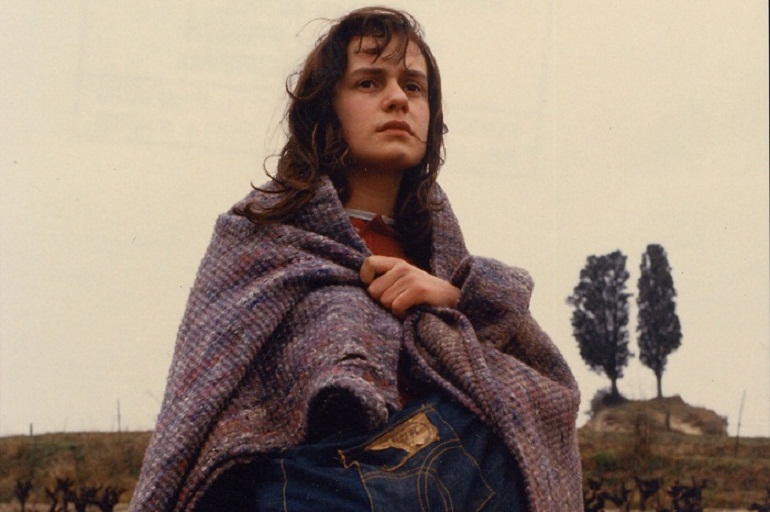
The film acutely portrays the repeated process whereby Wanda silently ‘accepts’ the invitations of men, and later goes to bed with them without any resistance. Loden depicts this dynamic as something almost ‘natural’, as something in which Wanda seems to acquiesce without thinking too much or being troubled by it. She becomes instantly, pathetically attached to these men who ‘rescue’ her, even if their agenda is selfish, and the small amounts of money they give her will have to be compensated for with sex –thus placing her in a position of unwitting prostitution.
However, there are small gestures, tiny expressions of defeat, of being caught in these dynamics, which register flickers of consciousness on her part –see, for instance, her wordless gesture in the bar when, after the divorce and the rejection by her boss, a man pays for her drink. Toward the film’s end, it becomes ever more difficult for Wanda to accept this spiral. Her suffering becomes more evident, as if she can no longer bear the full weight of it –a pain that, moreover, she neither really expresses nor communicates. Wanda’s panicked reaction to a random guy’s sexual aggression in the penultimate, near-rape scene –a passage whose sadness is reminiscent of Bresson’s Mouchette (1967) and the Dardennes’ Rosetta (1999)–signals a clear affinity between Wanda as a female figure and the ultimate response of Jeanne Dielman to a male client in Akerman’s 1975 masterpiece.
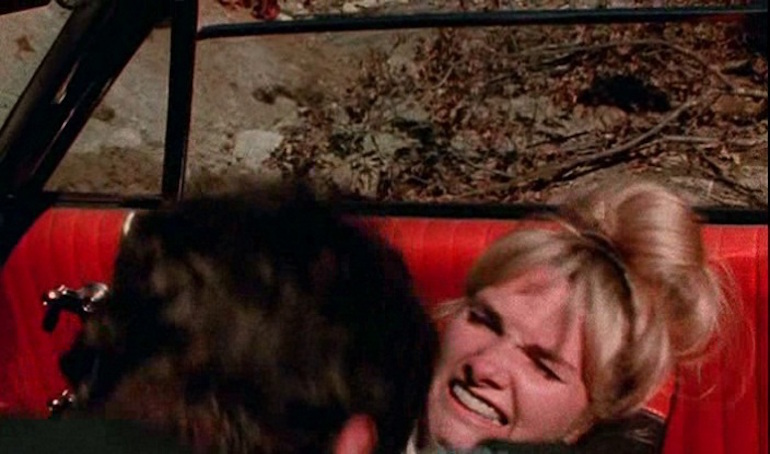
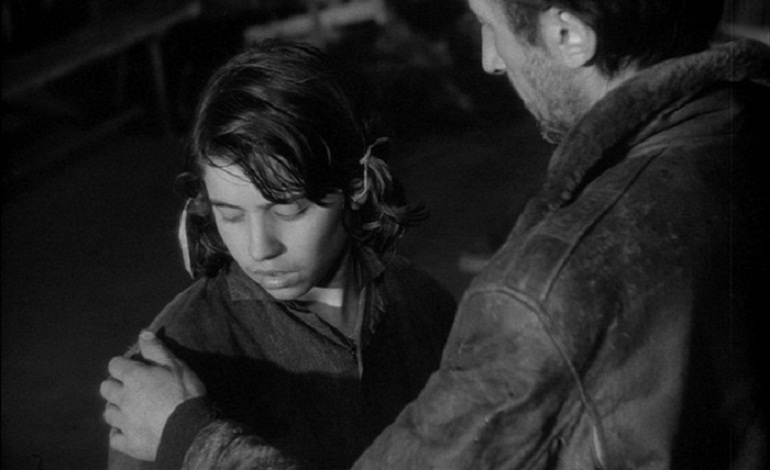
Loden’s reference above to psychoanalysis is evocative, because of its link to notions of a necessary split in identity, and in perceptions of one’s self –the distance or perspective upon the self which a successful psychoanalysis strives for. Loden commented, just after making Wanda, that she found it extremely difficult to act and direct at the same time. For someone like her, an actress turned director, it was not simply the new role or craft of directing that she found difficult; rather, it was the combination of both functions at the same time. She remarked that, from the outside, it is very easy to see what is wrong in a scene, but since she had to be also inside the scene, the process became hard. This dialectic of interior/exterior implied by the dual role of actor/director finds a mirror in the dialectic of life/film, and even in character (Wanda)/real person (Loden). Loden spoke positively about psychoanalysis teaching her things about herself. In light of this, the decision to both act and direct in Wanda can be considered a kind of extreme exorcism, an exteriorisation –in order to understand better oneself, to reach a truth about oneself. In this sense, Duras was absolutely right: Loden perhaps did find a way to become more real, more authentic, in the film than in her everyday life.
III.
Now let us turn to more specifically cinematic matters of representation. We have already cited Duras’ praising of the film’s ‘miracle’ –its transparent bringing-forth of a woman (Loden equals Wanda) on screen. Her impression was that this miracle was not a matter of the actor’s performance, and thus not an active production of artifice, of stylisation. Here, we must take the contrary position to Duras: it is indeed through a superb conjunction of body, behaviour and space that Loden the actor and Loden the director achieve this heightened quality, this revelatory laying-bare of Wanda’s presence on screen. To overlook or ‘foreclose’ on this materiality of the film is itself a repressive act, of the type too often performed on the creative work by social minorities or those deemed marginal (including women). For it is through this particular, very concrete ‘miracle’ that Wanda has become –for those fortunate enough to have encountered and appreciated the film– a veritable axiom of cinema.
We are evoking here an artistic process that goes light years beyond Pauline Kael’s dismissal of Wanda as ‘an extremely drab and limited piece of realism’ (KAEL, 1982: 640). Indeed, it is the fate of several radical masterpieces of independent, low-budget cinema –Charles Burnett’s Killer of Sheep (1977) and Lynne Ramsay’s Ratcatcher (1997) are two others (see ÁLVAREZ LÓPEZ & MARTIN, 2015)– to be swallowed up and flattened out (whether in negative or positive accounts) by this facile labelling as ‘realist’, thus making content more important than form, and assuming once again an immediate transparency of this real-life content simply ‘shining through’ an indifferently woven cinematic surface.
Let us look at Loden’s performance style as a demonstration of this intricate and intensive art and artifice. The variation of Constantin Stanislavsky’s Method that Loden used (with affinities to Michael Chekhov’s technique; see CHEKHOV, 1985) was a combination of: the actor’s imagination; expressive gestures; postural concentration; careful attention to objects or props associated with a character; and controlled line readings. Her performance as Wanda radiates a suppressed intensity through usually minimal means: her gaze –Chekhov taught his acting students to “radiate” from their eyes (CHEKHOV, 1985: 32, 108); the forward slump of her body; the turning of her head; her blank, affectless voice; and, above all, the physical prop of her hair, which is constantly arranged into different shapes, and just as constantly gets in Wanda’s way, as one more part of her world that she cannot control. All of this can be studied at length via a formal analysis of the film, of the type that we present in our audiovisual essay Woman in a Landscape (2016) devoted to Wanda.
It is here that useful comparisons (or a figural networking) with Elaine May, Lena Dunham and Laura Dern can be made. As Luc Moullet once rightly remarked of his own comedic art at the moment of La Cabale des oursins (1992): when a director becomes an actor in his own work, the motto must be ‘stoop to conquer’ –i.e., don’t be afraid of making yourself look ungainly, ugly, ridiculous. This becomes especially intriguing –because of the heavy constraints of patriarchal ideology– when we consider the female actor-auteur, who is more likely than her male counterparts to be labelled grotesque in pursuit of the same goal. Part of the provocation here comes from a militant deglamourisation that cuts right across social norms: Moullet or Nanni Moretti have never had to worry about the special, transgressive kind of frisson that takes place on screen when Loden, May (in A New Leaf) or Dunham (in her feature film Tiny Furnitrue, 2010, and her TV series Girls, 2012-2016) deliberately make themselves appear frumpy, awkward and un-beautiful (in societal terms) –or when May directs her own daughter, Jeannie Berlin, in the extremely deglamourised role of the obsessively- eating ‘first wife’ of a chronically deluded, fantasising man in The Heartbreak Kid.
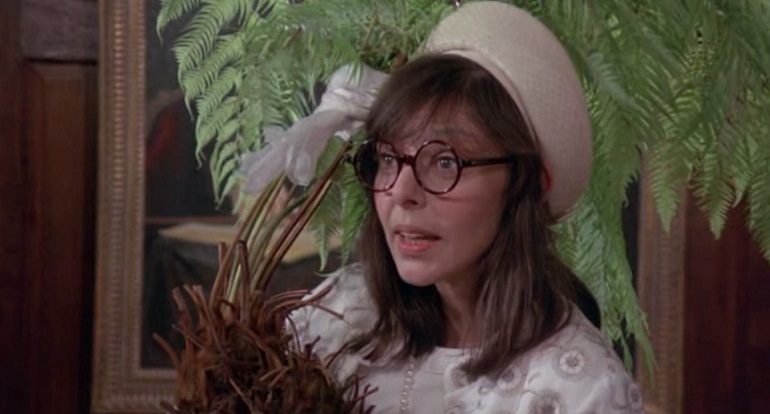
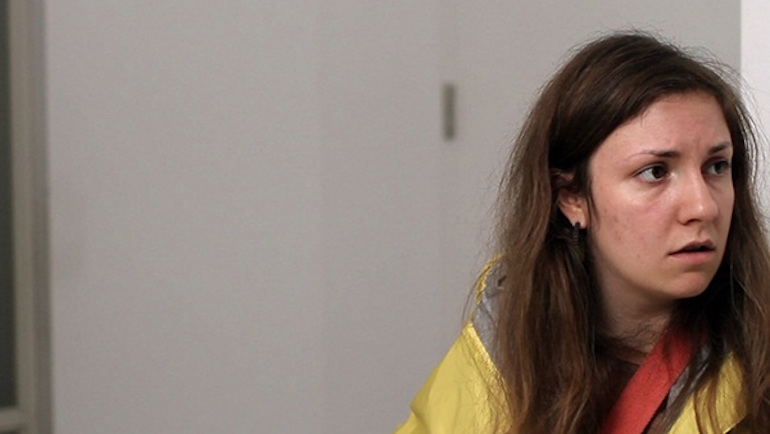
The affinity between Loden as Wanda and Laura Dern as a screen figure has been little noticed by cinephiles, but it is strong. There are general grounds for comparison: both have dealt with the fame of a partner, or parents, in the same industry. Both were associated, early in their careers, with precocious, sexualised roles, male fantasy-projections (see, for an intriguing commentary on this, Dern’s role in Joyce Chopra’s Smooth Talk [1985], adapted from a Joyce Carol Oates story). And both gravitated to exploring roles of lost, alienated, threatened, ‘misfitting’ women who do not match the typical norms of feminine beauty, success and value.
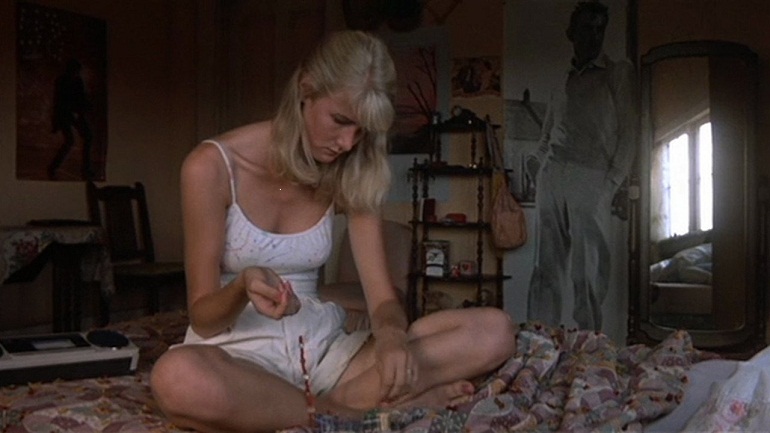
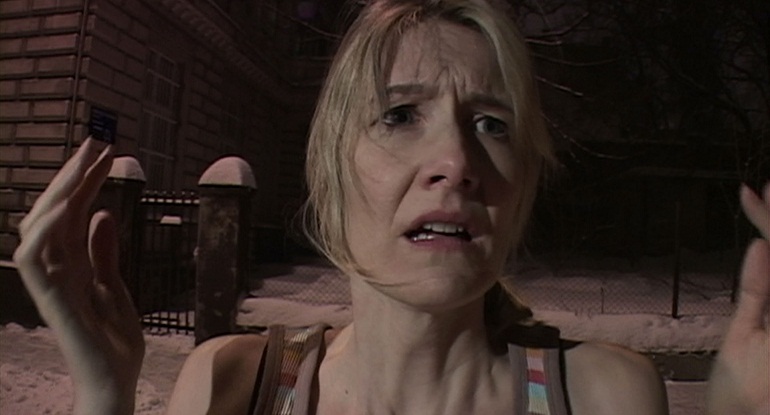
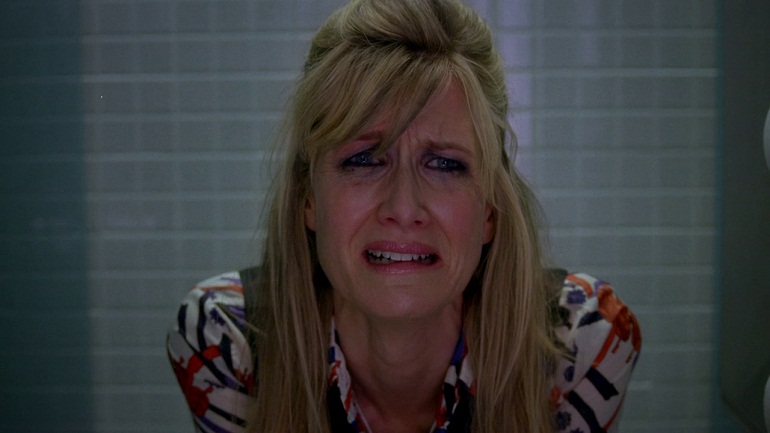
Then, more specifically, Loden and Dern share a very similar physical appearance: the ‘all-American girl’ type, blonde, thin, tall, blue-eyed. These could easily be the physical characteristics of a model, if trained and ‘framed’ appropriately (as Loden, in her career, frequently was). But, by the same token, this type harbours something eccentric, ill-fitting, excessive –even grotesque. Like Loden in Wanda, Dern in some of her performances makes much of her estranged body in motion, her uncomfortable tallness, her slump, her gawkiness. Think of how the act of crying deliberately deforms her ‘good looks’ into a kind of grotesque mask in David Lynch’s Blue Velvet (1986). This tendency is taken much further, both by Lynch in Inland Empire (2006) and Dern herself as star and co-creator of Enlightened, whose opening plot event (the Dern character’s complete humiliation and ‘meltdown’ at work) offers a classic example of ‘stooping to conquer’.
IV.
In its time, and still today, Wanda escapes any tidy generic classification. It is not a ‘criminal couple on the run’ movie like Arthur Penn’s Bonnie and Clyde (1967) –which Loden regarded as phony, ‘idealised– full of beautiful things, beautiful colours, beautiful people’ (CIMENT, 1975: 37). By the same token, within our contemporary context, Wanda not does play by any of the standard ‘indie film’ templates. It is not a quirky romance, a story of personal redemption, or of family reconciliation. The cries –which, in our time, have a doleful New Age ring– for screen depictions of a ‘new woman’ or a ‘positive heroine’ (to recall Reynaud’s analysis) still impede radical progress and provocation in women’s cinema. Wanda is not the kind of film that, yesterday, today or tomorrow, could ever pass the lamentable, blunt blade of the idiotic Bechdel Test (see BECHDEL, 2016), with its policing of supposedly enlightened –but, in truth, fatally comforting and reductive– ‘mirror images’ of contemporary women!
Wanda is also –to move to a more congenial and productive comparison– fundamentally unlike the cinema of John Cassavetes with which it is often aligned. “Cassavetes’ Faces [1968] has all the clichés of the Actors Studio”, Loden commented in 1970. ‘It recalls every improv class, with its acting cliché of drunk people. And I have a different attitude to him about content’ (CIMENT, 1975: 38). And what was this radically different attitude of Barbara Loden’s sole feature film? Where the force of Cassavetes’ cinema is externalised, melodramatic, explosive, often (in both the psychoanalytic and everyday senses) hysterical, Barbara Loden chose to explore a more mysterious and implosive energy. As Reynaud sums it up, Wanda explores ‘the opaque, ambiguous territory of unspoken repression that has so often defined the condition of women’ (REYNAUD, 2004: 230).
One of the unmade projects of Barbara Loden was an adaptation of Kate Chopin’s famous novel The Awakening, the author’s original title for which was A Solitary Soul. (Mary Lambert, another overlooked director, brought the story to the screen as Grand Isle in 1991.) A website devoted to Chopin informs us that The Awakening is ‘about a married woman seeking greater personal freedom and a more fulfilling life. Condemned as morbid, vulgar, and disagreeable when it appeared in 1899, it is today acclaimed as an essential American book’ (CHOPIN, 2016). Does this thumbnail description remind you of the fate –past, present and future– of any particular film?
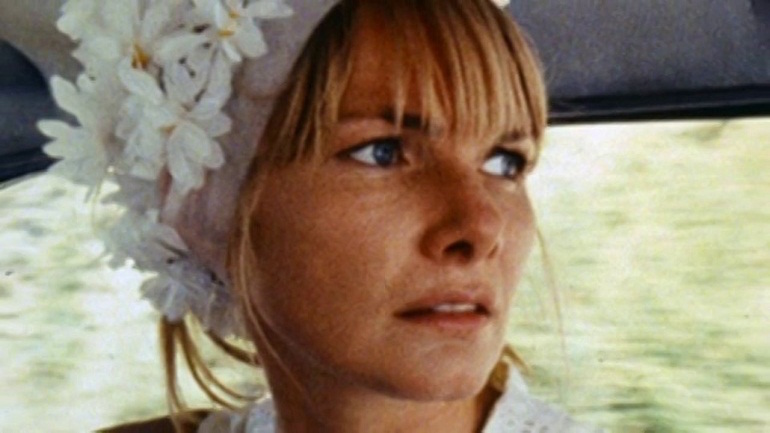
NOTES
1 / It is also intriguing to note the interrelation of many of these names with the cinemas of, on the one hand, John Cassavetes and, on the other, Woody Allen. May directed Cassavetes and Peter Falk in the extraordinary Mikey and Nicky (1976); Falk acts in In the Spirit; May, Berlin and Keaton have worked with Allen.
2 / Like many edited interviews (especially those translated into a language different to that in which they were conducted), Ciment’s published transcription of his 1970 discussion with Loden is extensively rephrased, rearranged and, in parts, condensed or paraphrased. It is essentially an accurate record. However, some key statements by Loden –as well as the identity of a female co-interviewer!– are left out. We have closely compared the Positif version with the audio recording as (incompletely, alas) included on the MK2 DVD of Wanda, and have cited throughout our text some of the missing phrases that appear in the latter. (Another example, for the record: when Loden cites authors who have influenced her, she includes Guy de Maupassant alongside Zola and Céline.)
ABSTRACT
American Barbara Loden has become a figure of screen myth: actress, model, wife of Elia Kazan, teacher, and writer-director of a sole, remarkable feature film, Wanda (1970). Dead in 1980 at the age of 48, Loden and her film, despite gaining sporadic, passionate attention around the world, largely fell outside of most film histories, even feminist film history. Is this because it is a film about a proletarian character (played by Loden herself) who is passive, alienated, mostly non-resistant to male manipulation and abuse? Wanda raises complex issues of self-portraiture in cinema: Loden both is, and is not, mirrored in her character. Often mistaken for ‘artless’ or purely ‘direct’ filmmaking, this analysis seeks to uncover the rigorous principles of performance, scripting and mise en scène that underpin Wanda and make it such an overwhelming, uncompromising and incomparable monument of cinema.
KEYWORDS
Women’s cinema, feminist theory, Barbara Loden, Wanda, mise en scène, acting, self-projection
BIBLIOGRAPHY
ÁLVAREZ LÓPEZ, Cristina & MARTIN, Adrian (2015). Against the Real, in [in]Transition, Vol 2 No 2, http://mediacommons.futureofthebook.org/intransition/2015/05/25/against-real
BECHDEL, Alison (2016). http://bechdeltest.com/
CHEKHOV, Michael (1985). Lessons for the Professional Actor. Performing Arts Journal Publications.
CHOPIN, Kate (2016). http://www.katechopin.org/the-awakening/
CIMENT, Michel (1975). Entretien avec Barbara Loden. Positif, no. 168 (April).
DANEY, Serge (2001). La Maison cinéma et le monde: 1. Le Temps des Cahiers 1962-1981 (P.O.L.).
DELEUZE, Gilles (1986). Cinema 1: The Movement-Image. Minneapolis. University of Minnesota Press.
DURAS, Marguerite (1990). Green Eyes. New York. Columbia University Press.
KAEL, Pauline (1982). 5001 Nights at the Movies. Zenith.
KARÁCSONYI, Judit (2014). Fictions and Realities: On the Margins of Barbara Loden’s Wanda and Nathalie Léger’s Supplément à la vie de Barbara Loden. Americana: E-Journal of American Studies in Hungary, Vol X No 1, americanaejournal.hu/vol10no1/karacsonyi
KRASNER, David (2011). An Actor’s Craft: The Art and Technique of Acting. Palgrave.
KROHN, Bill (1977). Les Cahiers du cinéma 1968-1977: Interview with Serge Daney. The Thousand Eyes, no. 2.
MARTIN, Adrian (2001). La nuit expérimentale. Deux fois de Jackie Raynal, in N. Brenez & C. Lebrat (eds), Jeune, dure et pure! Une histoire du cinéma d’avant-garde et expérimental en France (Cinémathèque française/Mazzotta).
MK2 (2004). Wanda DVD (France).
RÉMOND, Marie (2013). Vers Wanda (La Colline theatre nationale), http://www.colline.fr/sites/default/files/documents/dpeda_wanda.pdf
REYNAUD, Bérénice (2004). For Wanda. ELSAESSER, T., HORWATH, A. & KING, N. (eds.), The Last Great American Picture Show. Amsterdam: Amsterdam University Press. The essay was originally published in German in 1995: Für Wanda. HORWATH, A. (ed.), The Last Great American Picture Show. New Hollywood 1967-1976. Vienna: Wespennest/Viennale.
CRISTINA ÁLVAREZ LÓPEZ
Critic and audiovisual artist who lives in Vilassar de Mar. She is the Co-Founder of the Spanish online film journal Transit: Cine y otros desvíos. Her critical writing and audiovisual essays have also appeared in Fandor Keyframe, MUBI Notebook, LOLA, La Fuga and De Filmkrant and in books on Chantal Akerman, Bong Joon-ho, Philippe Garrel and Paul Schrader.
ADRIAN MARTIN
Adjunct Associate Professor of Film and Screen Studies at Monash University (Australia), and lives in Vilassar de Mar as a freelance writer and audiovisual artist. He is the author of seven books, the most recent being Mise en scène and Film Style: From Classical Hollywood to New Media Art (Palgrave). He is Co-Editor of LOLA journal, and of the book Movie Mutations (BFI, 2003).
Nº 8 PORTRAIT AS AN ACTRESS, SELF-PORTRAIT AS A FILMMAKER
Editorial. Portrait as an actress, self-portrait as a filmmaker
Gonzalo de Lucas
DOCUMENTS
About the femenine
Maya Deren
About Fuses
Carolee Schneemann
Conversation about Wanda by Barbara Loden
Marguerite Duras and Elia Kazan
About the Film-Diary
Anne-Charlotte Robertson
Nothing to say
Chantal Akerman
FILMS UNDER DISCUSSION. INTERVIEWS
About the Women Film Pioneers Project
Alejandra Rosenberg
Medeas. Interview with María Ruido
Palma Lombardo
VIDEO ESSAY
Florencia Aliberti, Caterina Cuadros and Gala Hernández
ARTICLES
Lois Weber: the female thinking in movementWeber: the female thinking in movement
Núria Bou
‘One must at least begin with the body feeling’: Dance as filmmaking in Maya Deren’s choreocinema
Elinor Cleghorn
Nothing of the Sort: Barbara Loden’s Wanda (1970)
Cristina Álvarez López and Adrian Martin
The Trouble with Lupino
Amelie Hastie
Presence (appearance and disappearance) of two Belgian filmmakers
Imma Merino
Identity self-portraits of a filmic gaze. From absence to (multi)presence: Duras,Akerman, Varda
Lourdes Monterrubio Ibáñez
REVIEW
Jorge Oter; Santos Zunzunegui (Eds.) José Julián Bakedano: Sin pausa / Jose Julian Bakedano: Etenik gabe
María Soliña Barreiro

